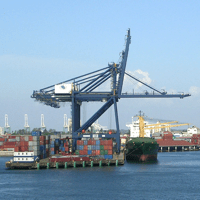Editor's note: This is the last of a five-part series examining security and development aid in East Africa. Part I provided an overview of the challenges facing East Africa. Part II examined the overlap between public health and security challenges. Part III examined the overlap between small-arms trafficking and WMD nonproliferation. Part IV examined the overlap between counterterrorism and efforts to contain criminal violence. Part V provides success stories for the security-development model and discusses next steps.
In East Africa, pressing regional challenges -- including the inability to detect and treat disease, the flow of illicit firearms across unsecured borders and the spread of deadly terrorist operations -- are intimately connected to, and directly undercut, international efforts to prevent the proliferation of weapons of mass destruction. Enduring armed conflicts, organized criminal activity and poor health all contribute to poverty and hamper economic development, which in turn diminishes governments' ability to effectively address national security objectives. Meanwhile, determined proliferators are likely to thrive in places where security infrastructure is weak, taking advantage of lax monitoring and regulation. Limited capacities across the region, combined with diminishing foreign assistance as a result of the global financial crisis and the growing confluence of security and development challenges, suggest that we can no longer manage these issues in isolation.
Hence, the case for better leveraging foreign assistance dollars with a dual-benefit approach has never been stronger. Traditional security-related assistance can be tapped to help meet internal development goals and human security priorities while simultaneously addressing international counterterrorism and nonproliferation obligations. This assistance can go further than single-purpose aid and is more sustainable. U.N. Security Council Resolutions 1373, on counterterrorism, and 1540, on nonproliferation, offer opportunities to do just that. The net result is a durable and sustainable relationship for governments working toward similar goals and a regional dialogue that better meets both recipient and donor objectives.

